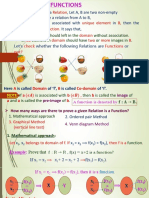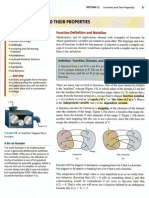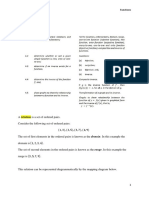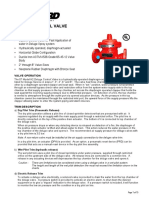0% found this document useful (0 votes)
59 views54 pagesFunctions
This document discusses functions and their graphs. It defines key terms like relation, function, domain, and range. It provides examples of determining if a relation is a function and discusses functional notation. It also covers topics like piecewise functions, even and odd functions, one-to-one and onto functions, and using graphs and algebra to analyze functions.
Uploaded by
LORENZO PALUMBOCopyright
© © All Rights Reserved
We take content rights seriously. If you suspect this is your content, claim it here.
Available Formats
Download as PDF, TXT or read online on Scribd
0% found this document useful (0 votes)
59 views54 pagesFunctions
This document discusses functions and their graphs. It defines key terms like relation, function, domain, and range. It provides examples of determining if a relation is a function and discusses functional notation. It also covers topics like piecewise functions, even and odd functions, one-to-one and onto functions, and using graphs and algebra to analyze functions.
Uploaded by
LORENZO PALUMBOCopyright
© © All Rights Reserved
We take content rights seriously. If you suspect this is your content, claim it here.
Available Formats
Download as PDF, TXT or read online on Scribd
/ 54
























































































